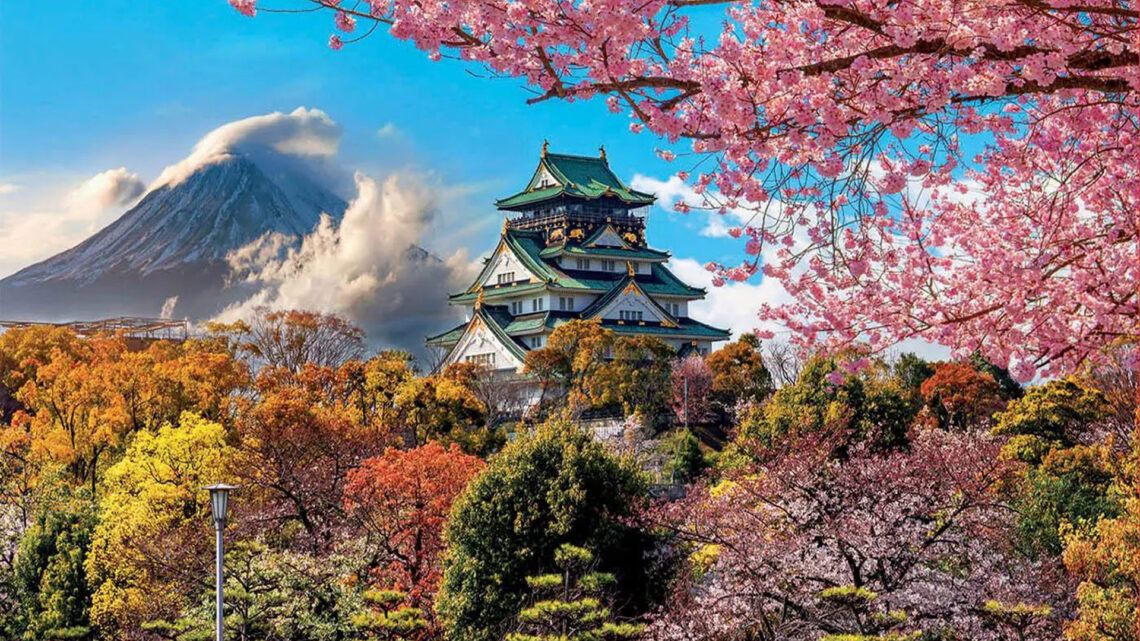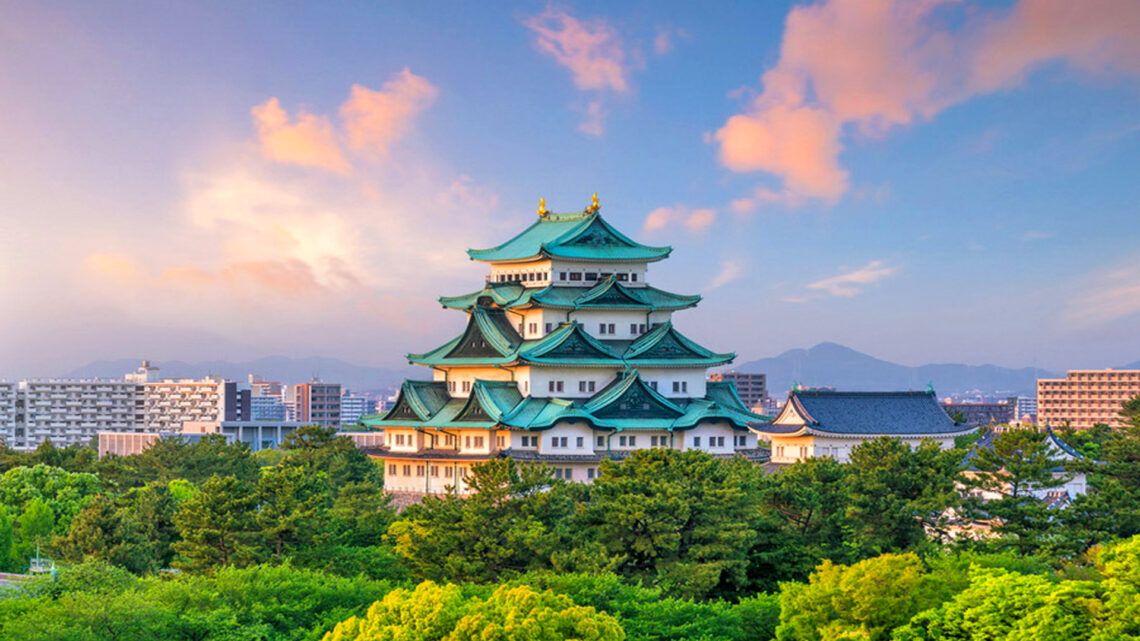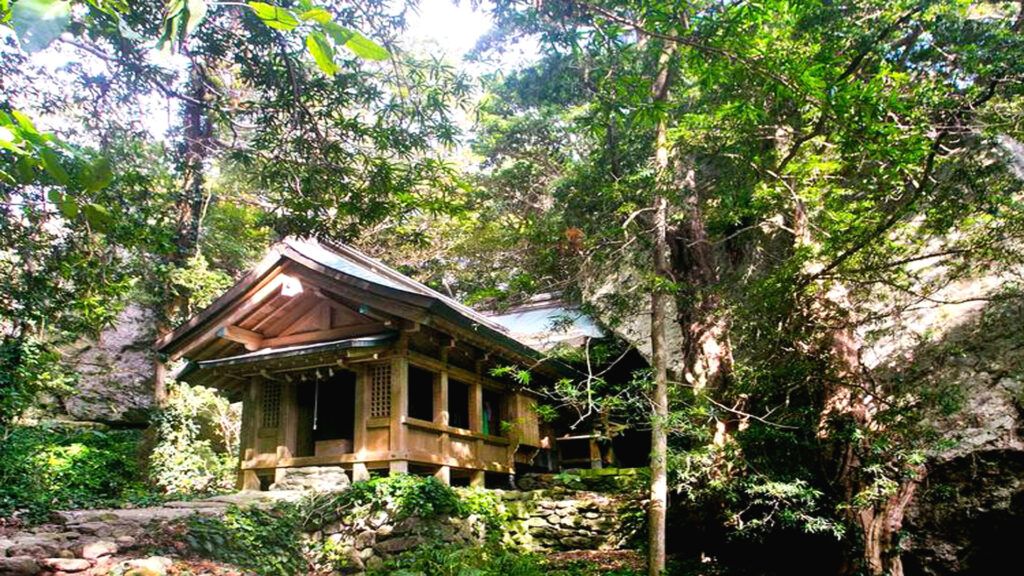
Okinoshima Island, the island of men, is a small yet significant island in Japan, located in the Sea of Japan. This remote and mysterious island belongs to the city of Munakata in Fukuoka Prefecture and has gained a special status due to its cultural and historical significance as well as its unique nature. In 2017, Okinoshima was added to the UNESCO World Heritage List, highlighting its global importance.
Okinoshima Island is about 60 kilometers from the mainland and covers an area of only 0.97 square kilometers. Despite its small size, the island holds an impressive array of historical sites and artifacts deeply rooted in Japanese history. The island is covered by a dense forest that occupies much of its area, serving as a natural protection for the numerous archaeological sites.
The history of Okinoshima dates back to ancient times. The island was an important site for maritime rituals and ceremonies conducted by ancient Japanese people. These rituals were meant to ensure the protection of sailors and safe passage across the often stormy Sea of Japan. Thousands of valuable offerings, including mirrors, swords, and jewels, have been found on the island, given as part of these rituals. These artifacts attest to the island’s deep religious and cultural significance.
One of the most prominent sites on Okinoshima is the Okitsu Shrine, which is part of the Munakata Taisha Shrine complex. The shrine is dedicated to the goddess Tagorihime, one of the three Munakata goddesses who play a central role in Japanese mythology. The Okitsu Shrine has been revered as a sacred place for centuries, and religious ceremonies are still held there regularly. However, access to the island and the shrine is highly restricted to preserve the integrity and sacred nature of the site.
Only a few people are allowed to enter Okinoshima, and these are exclusively male priests from the Munakata Taisha Shrine who have undergone specific purification rituals. Women are strictly forbidden from entering the island, a rule based on ancient religious traditions. These strict restrictions are intended to protect the sacred sites and maintain the spiritual purity of the island. Visitors who have the privilege to enter the island are not allowed to take any objects with them to ensure the integrity of the archaeological sites.
The flora and fauna of Okinoshima are as remarkable as its cultural significance. The dense forest that covers the island is home to a variety of plant and animal species, some of which are endemic. The island’s pristine nature provides an important habitat for birds and other wildlife. Additionally, the island’s isolation contributes to the preservation of its unique ecological systems.
Okinoshima not only has a rich past but also plays a significant role in contemporary Japanese culture and religion. The island is considered a place of spiritual renewal and prayer, and the rituals conducted here hold deep meaning for priests and believers. The recognition as a UNESCO World Heritage site has further raised awareness of the island’s significance and attracted international attention to this unique place.
Efforts to protect and preserve Okinoshima are of great importance, as the island represents an invaluable cultural heritage. Preserving the archaeological sites and continuing traditional rituals are essential aspects of maintaining this heritage for future generations. Additionally, scientific studies play a crucial role in researching and documenting the island’s history and significance.
Okinoshima is a remarkable example of the connection between nature and culture. The island uniquely combines the beauty of its natural surroundings with the depth of its historical and spiritual significance. It reminds us of the importance of appreciating and protecting our cultural heritage and keeping alive the stories and traditions that connect us to our past.
Overall, Okinoshima Island is a fascinating destination, distinguished by its historical significance, cultural depth, and natural beauty. The island remains a place of reverence and wonder, a living testament to Japan’s rich history and spirituality.
Okinoshima and the Women
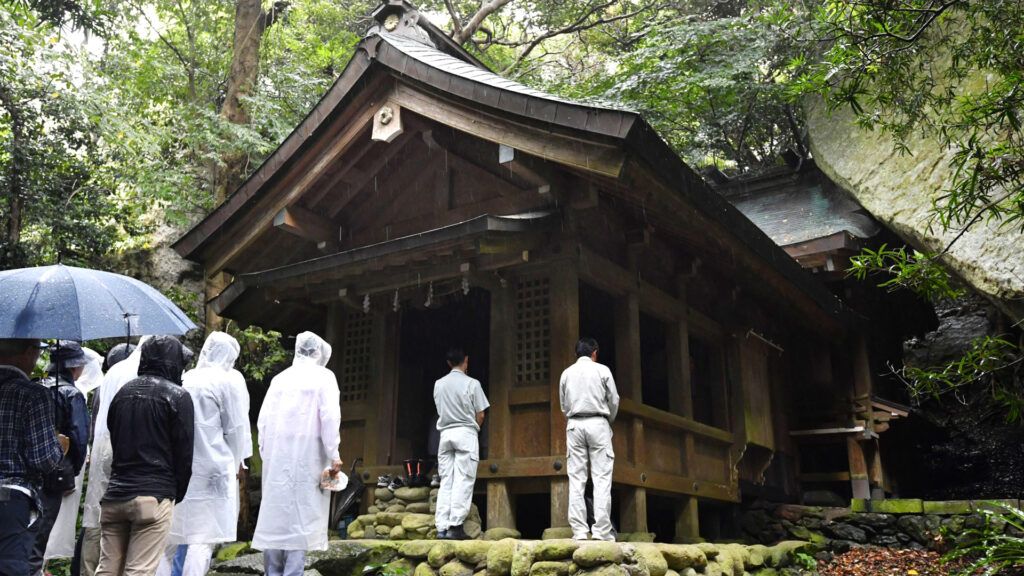
The exclusion of women from entering Okinoshima Island is deeply rooted in ancient religious and cultural traditions that have evolved over centuries. This practice is based on Shinto beliefs and has several historical, cultural, and spiritual reasons.
One of the main reasons for the prohibition is related to the concept of ritual purity and impurity, which plays a central role in Shintoism. In traditional Japanese religion, the purity of body and mind is highly valued, and certain natural processes such as childbirth and menstruation were historically considered potentially impure. These beliefs led to the idea that menstruating women were impure and therefore excluded from certain sacred sites and rituals to maintain the spiritual purity of these places.
Okinoshima is considered an especially sacred place, as numerous important maritime rituals and ceremonies were conducted here to seek the gods’ protection and ensure safe passage across the often perilous Sea of Japan. These rituals were crucial for sailors and traders who relied on the gods’ favor. To ensure the purity and effectiveness of these rituals, women were prohibited from entering the island.
Another aspect is the historical structure of the priesthood and religious hierarchy at the Munakata Taisha Shrine, which includes the Okitsu Shrine on Okinoshima. Traditionally, priestly roles in Japan were predominantly held by men, and the performance of important rituals and ceremonies was reserved for men. This patriarchal structure was reflected in the rules governing access to sacred sites.
A cultural and mythological reason for the prohibition relates to the goddesses to whom Okinoshima is dedicated. The island is particularly dedicated to the goddess Tagorihime, one of the three Munakata goddesses. It is believed that the presence of women on the island could disrupt the spiritual balance and affect the relationship between divine forces and human worshippers. The prohibition was thus intended to maintain spiritual harmony on the island.
Beyond religious and cultural reasons, there are also practical considerations. The isolation and harsh conditions on Okinoshima, including difficult access and limited infrastructure, could make it challenging for women, particularly during menstruation, to meet the necessary ritual purity standards. Historically, such practical considerations were often intertwined with spiritual and cultural rules.
In modern times, this practice is often viewed critically and considered discriminatory. There are discussions about whether such traditional rules are compatible with contemporary notions of equality and gender justice. Some argue that maintaining this rule is necessary to preserve the cultural and spiritual integrity of the site, while others advocate for reform and adaptation of these traditions.
Despite these discussions, the prohibition on women entering Okinoshima remains in place today. It reflects the complex interactions between religion, culture, and tradition in Japan and shows how deeply ingrained belief systems can persist over centuries. For the priests and worshippers of the Munakata Taisha Shrine, upholding this rule is a way to protect and honor the spiritual purity and historical significance of the island.
Overall, the prohibition of women from entering Okinoshima is a multifaceted phenomenon that combines religious, cultural, and practical aspects. It is an example of how traditions and beliefs can be deeply rooted in the history and spirituality of a society, while also posing a challenge for modern interpretation and application of such rules.
Geographical Location of Okinoshima Island

Okinoshima Island is located approximately 60 kilometers northwest of Kyushu, the southernmost of Japan’s four main islands, and is part of Fukuoka Prefecture. Geographically, the island is situated in the Sea of Japan, a marginal sea that separates Japan from the Korean Peninsula and mainland Asia. The island’s precise coordinates are around 34.2422 degrees north latitude and 130.1017 degrees east longitude.
The island itself is relatively small, with an area of just under one square kilometer. Despite its small size, Okinoshima boasts impressive topographical diversity. The coastline is characterized by steep cliffs and rocky outcrops, shaped by constant erosion from wind and waves. These rugged shores provide a dramatic landscape while creating numerous natural coves and inlets.
The interior of the island is predominantly covered by dense forest, which occupies most of its area. These wooded regions are largely untouched and host a variety of plant and animal species. The forest consists mainly of evergreen broadleaf and coniferous trees, forming a lush green canopy throughout the year. In the deeper parts of the forest, one can find a variety of ferns, mosses, and other shade-loving plants.
Okinoshima lies in a seismically active region, meaning the island can occasionally be affected by earthquakes. The volcanic activity in the area has also contributed to the geological formation of the island. While there are no active volcanoes on Okinoshima itself, its volcanic past has shaped the rocky landscape and contributed to the mineral-rich soils.
The climate on Okinoshima is temperate maritime, characterized by mild winters and warm summers. The proximity to the sea results in high humidity and regular rainfall, which support the lush vegetation. Temperatures vary throughout the year, with summer months often being hot and humid, while winter months are mild and less humid.
Strategically, the island is situated in the Tsushima Strait, an important maritime route that connects the Sea of Japan with the East China Sea. This geographical position made Okinoshima a crucial point for maritime activities in the past, including trade and navigation. Historically, the Tsushima Strait was a significant route for the exchange of goods and cultural influences between Japan, Korea, and China.
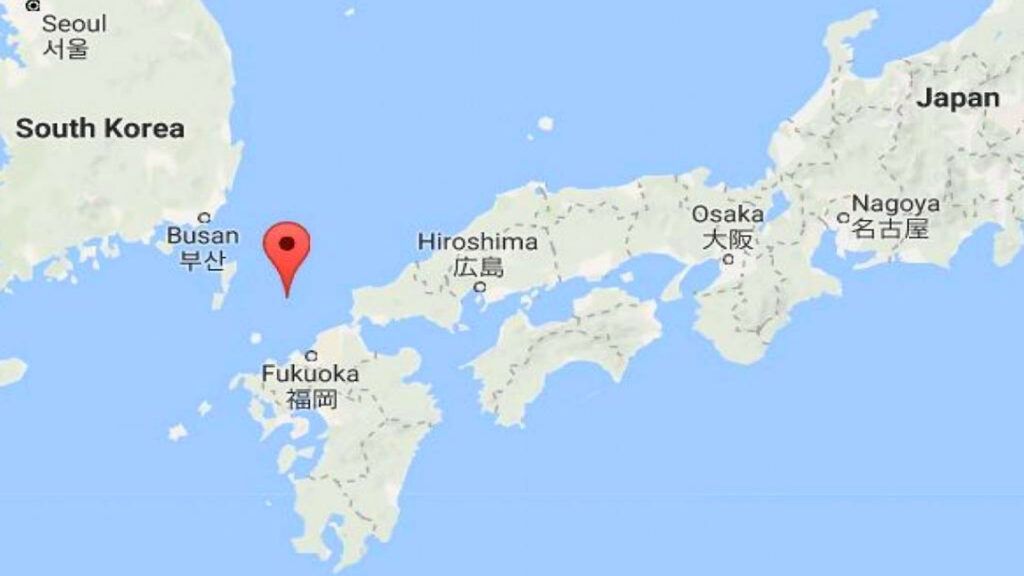
Okinoshima is surrounded by several smaller islands and rocks, collectively forming the Munakata Archipelago. These smaller islands and rocks are often difficult to access and uninhabited but contribute to the region’s biological and ecological diversity. They also provide nesting sites for seabirds and habitats for marine species.
The isolation of Okinoshima has helped preserve its natural beauty and cultural treasures largely untouched. The island’s difficult accessibility and strict access restrictions also contribute to maintaining its unique atmosphere and historical character.
Overall, the geographical location of Okinoshima offers a fascinating combination of natural beauty, historical significance, and cultural depth. The island is a living testament to the connection between humans and nature, a place where Japan’s history and spirituality are uniquely expressed. The geological and climatic diversity of the island adds to its significance and charm, making it a unique and valuable part of Japan’s heritage.
A Journey to Okinoshima Island

A journey to Okinoshima Island usually begins in the city of Munakata in Fukuoka Prefecture on the main island of Kyushu. Since access to the island is highly regulated, travelers must first obtain the necessary permissions. This is typically done through the Munakata Taisha Shrine, which is responsible for the management and protection of the island. Only a limited number of visitors, mostly priests or researchers, are granted permission to enter the island.
The journey itself typically starts at the port of Konominato, where visitors take a boat that transports them across the Sea of Japan to Okinoshima. The crossing takes about two to three hours, depending on weather conditions and sea state. During the voyage, travelers can enjoy the vastness of the sea and may also catch glimpses of some of the surrounding islands in the Munakata Archipelago.
Upon arrival at Okinoshima, visitors disembark at a small, provisional docking area embedded in the island’s rocky coastal landscape. From here, a guided hike begins, as all visitors must strictly adhere to instructions and rules to preserve the integrity of the sacred sites and the island’s delicate nature.
The first stop is often the Okitsu Shrine, a significant place of worship located deep within the island’s dense forest. The path to the shrine winds through narrow trails lined with lush vegetation and tall trees. The forest’s atmosphere is calm and solemn, underscoring the island’s spiritual significance. Along the way, small stone altars and memorials mark previous rituals and offerings.
The Okitsu Shrine itself is a modest yet impressive structure that reflects traditional Japanese architecture. It is dedicated to the goddess Tagorihime and has been maintained by the priests of Munakata Taisha Shrine for centuries. Before entering the shrine, visitors often undergo a purification ritual, symbolically cleansing themselves of negative influences.
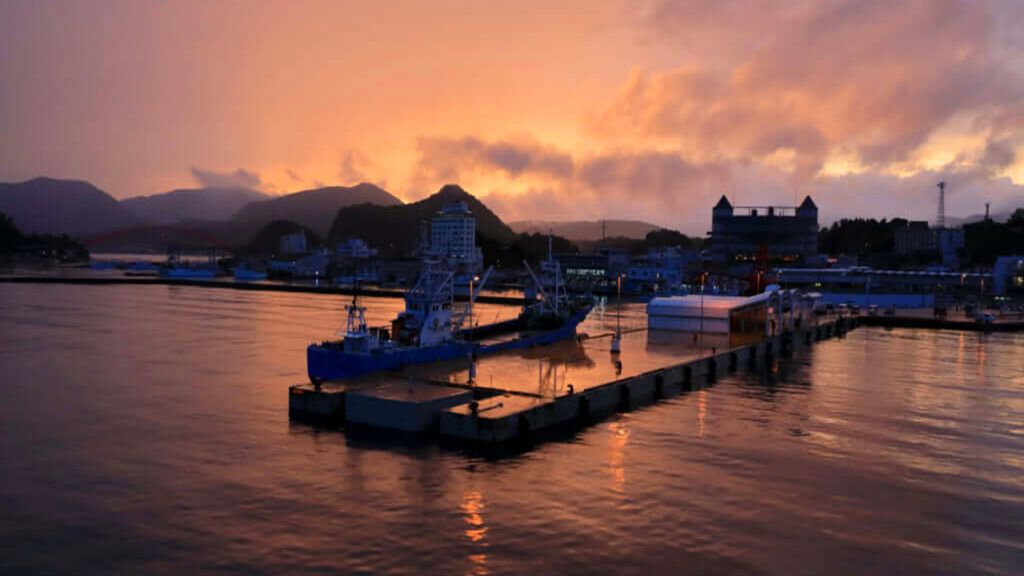
Following the shrine visit, the journey continues to various archaeological sites scattered across the island. These sites hold great historical significance and provide insight into the ancient maritime rituals and ceremonies that took place here. The guides, usually priests or researchers, offer detailed explanations of the artifacts found and their meanings.
Another highlight of the journey is visiting the coastal areas, where steep cliffs and rocky formations offer stunning views of the sea. These sites are not only scenically beautiful but also hold spiritual importance, as many ancient rituals were conducted by the water. Here, visitors can enjoy the fresh sea breeze and fully experience the island’s pristine nature.
Throughout the stay on Okinoshima, visitors must be respectful and cautious to avoid disturbing the sacred sites and natural surroundings. Taking objects or altering the landscape is strictly forbidden. Photography is also prohibited in many areas to maintain the island’s spiritual integrity.
After a day of exploration and spiritual experiences, visitors return to the docking area to begin their journey back to Munakata. The return trip provides a final opportunity to reflect on the beauty of the Sea of Japan and the unique impressions of the journey.
A journey to Okinoshima is a rare and extraordinary experience that offers deep insights into Japanese history, culture, and spirituality. The combination of breathtaking nature, historical significance, and spiritual depth makes this journey an unforgettable experience, granted to only a select few.


